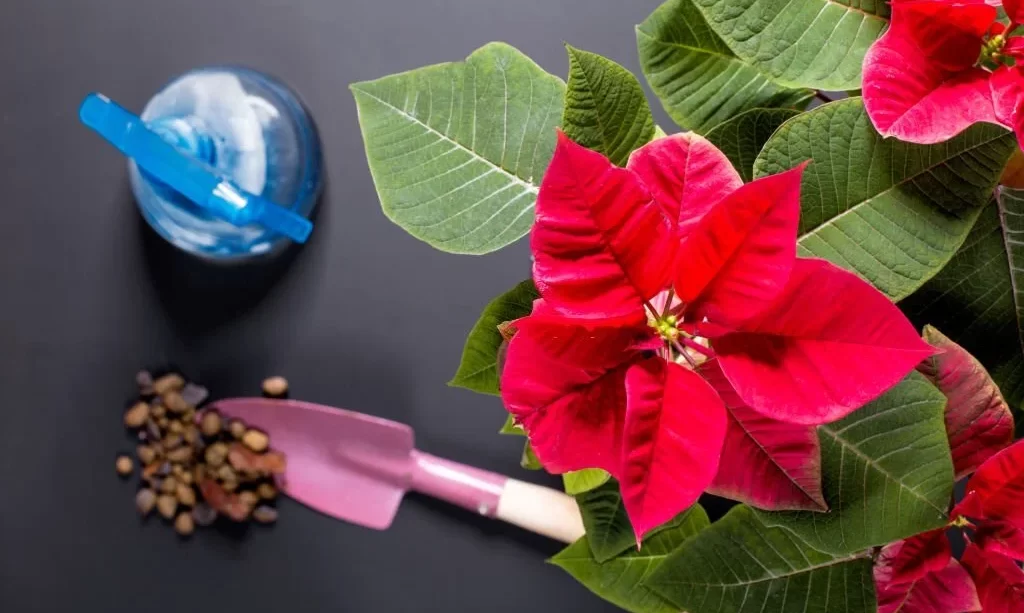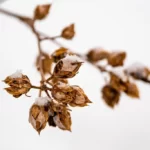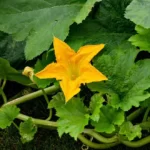As the holiday season approaches, the poinsettia takes center stage, adorning homes and public spaces with its brilliant red bracts and rich green foliage. Beyond its role as a symbol of warmth and celebration, the poinsettia holds the potential for a more personal tradition – propagation. Imagine cultivating new poinsettia plants, sharing the magic of the holidays with friends and family by gifting them these vibrant beauties, or simply expanding your own collection. In this guide, we delve into the world of poinsettia propagation, unlocking the secrets of nurturing new growth from existing plants and extending the joy of the holiday season through your own botanical endeavors.
- Coarse blend for epiphyte orchids, including Phalaenopsis, Cattleya, Epidendrum and Dendrobium
- Feeds up to 6 months
- Fast-draining mix
- Use when potting or repotting orchid types requiring drier conditions between waterings
- For spectacular results, feed with Miracle-Gro Orchid Plant Food
Poinsettia Propagation
To embark on the journey of poinsettia propagation, it’s crucial to grasp the fundamentals of this horticultural art:
- Purpose and Potential: Poinsettia propagation is the process of reproducing new plants from established ones. It offers enthusiasts the chance to multiply their poinsettia collection, share the beauty of these iconic holiday plants, or simply explore the fascinating world of plant reproduction.
- Methods and Choices: Propagating poinsettias can be accomplished through various methods, each with its unique advantages. Stem cuttings are the most common, while some adventurous gardeners may explore propagation from seeds. The choice of method depends on your goals, experience level, and the results you wish to achieve.
Understanding these foundational concepts lays the groundwork for a successful journey into the art and science of poinsettia propagation. Whether you’re a seasoned gardener or a budding enthusiast, this guide will equip you with the knowledge and skills to nurture new poinsettia growth and kindle the spirit of the holidays through your own botanical creations.
Propagation by Stem Cuttings
Propagation by stem cuttings is a popular and reliable method to expand your poinsettia collection. Here’s how to get started:
- Selecting the Right Stem: Choose a healthy, non-flowering stem from your existing poinsettia plant. Opt for a stem that’s about 4-6 inches long, with several pairs of leaves.
- Taking the Cuttings: Use clean, sharp pruning shears to make a clean, angled cut just below a leaf node (the point where a leaf meets the stem). Remove any leaves from the lower half of the cutting.
- Allowing the Cuttings to Callus: After cutting, place the poinsettia cuttings in a dry, well-ventilated area for about 2-3 hours. This allows the cut ends to callus, reducing the risk of rot during the rooting process.
Rooting Poinsettia Cuttings
Rooting the poinsettia cuttings is a critical step in the propagation process:
- Choosing the Right Medium: Fill small pots or trays with a well-draining rooting medium. A mix of perlite and peat moss or a specialized rooting mix works well.
- Planting the Cuttings: Insert the cut end of each poinsettia cutting into the rooting medium, making sure at least one leaf node is beneath the surface. Water lightly.
- Providing Ideal Conditions: Cover the cuttings and containers with a plastic dome or a clear plastic bag to create a mini greenhouse effect. Place them in a bright, indirect light location with temperatures around 70-75°F (21-24°C).
- Maintaining Humidity: Keep the humidity high around the cuttings by misting them regularly or using a humidity tray. This helps prevent the cuttings from drying out.
- Root Development: In about 4-6 weeks, you should notice roots forming on the poinsettia cuttings. Once the roots are several inches long, they are ready for transplanting.
Transplanting Rooted Poinsettias
Transplanting the rooted poinsettia cuttings into individual pots or a larger container is the next step in their growth journey:
- Selecting Containers: Choose pots or containers that are the appropriate size for your rooted poinsettia cuttings. Ensure they have drainage holes to prevent waterlogged soil.
- Potting Mix: Use a well-draining potting mix that provides good aeration for the roots. A mix suitable for houseplants works well.
- Transplanting: Gently remove the rooted cuttings from the original containers and plant them in their new pots. Ensure the root system is intact during the transplanting process.
- Watering: Water the transplanted poinsettias lightly and thoroughly to settle the soil around the roots. Maintain consistent moisture, but avoid overwatering.
- Acclimation: Place the transplants in a location with bright, indirect light for a few days to help them acclimate to their new environment.
By following these steps, you’ll successfully propagate poinsettias from stem cuttings, expanding your holiday plant collection and sharing the festive spirit with others.
Care and Maintenance of Young Poinsettias
Once your poinsettia cuttings have taken root and are on their way to becoming healthy young plants, it’s essential to provide them with proper care and maintenance:
- Watering: Young poinsettias require consistent moisture. Water when the top inch of soil feels dry to the touch, but avoid letting the pots sit in standing water, which can lead to root rot.
- Light: Place your young poinsettias in a location with bright, indirect sunlight. Avoid exposing them to harsh, direct sunlight, which can scorch their delicate leaves.
- Temperature: Maintain a warm environment for your poinsettias, ideally around 65-75°F (18-24°C). Avoid drafts and sudden temperature fluctuations, as they can stress the plants.
- Fertilizing: Feed your young poinsettias with a balanced, water-soluble fertilizer diluted to half strength every 2-4 weeks during the growing season (spring and summer).
- Pruning: Pinch back the tips of the stems once the poinsettias reach a height of about 6 inches to encourage bushier growth. Continue to pinch them periodically to shape and maintain their compact form.
- Professional Liquid Fertilizer for: Poinsettia varieties (Euphorbia pulcherrima)
- This food for plants belongs to the latest generation of fertilizers, for healthy leaves, stable and strong formation, balanced rooting, beautiful flowers.
- Very rapid effects, can be administered via the roots and as a foliar fertilizer. For 60-125 liters of ready to use liquid fertilizer
- Content: 250 ml, works as an economical concentrate. Simple dosage with the help of the cap.
- The fertilizers from the GREEN24 PROFI LINE were developed by gardeners of various departments and were evolved and produced based on the current knowledge in the field of propagation and cultivation of plants.
Propagation by Seeds
While propagation by stem cuttings is the most common method, some adventurous gardeners may choose to propagate poinsettias from seeds. Here’s a brief overview:
- Seed Collection: Collect seeds from mature poinsettia plants after the flowering cycle. Allow the seed pods to fully mature, and then carefully extract the seeds.
- Planting Seeds: Sow the poinsettia seeds in a seed-starting mix in small containers. Keep the soil consistently moist and provide bright, indirect light.
- Transplanting: Once the seedlings have grown large enough to handle, transplant them into individual pots or outdoor locations, if suitable. Follow the care guidelines mentioned earlier for young poinsettias.
Note that propagating poinsettias from seeds can be more time-consuming and may result in variations in color and characteristics compared to the parent plant’s bract color.
Conclusion
In the world of gardening, there’s a unique joy in nurturing new life from existing plants, and propagating poinsettias offers a delightful way to extend the magic of the holiday season. Whether you choose to propagate by stem cuttings or venture into the realm of seeds, your efforts will be rewarded with an ever-growing collection of these festive plants that bring warmth and beauty to your home.
As you care for and watch your young poinsettias thrive, remember that patience is key. With proper attention to their needs for water, light, temperature, and maintenance, your propagated poinsettias will continue to flourish, becoming living symbols of holiday cheer and a testament to your green thumb. May your holiday season and your garden be filled with the vibrant colors and joy that poinsettias bring year after year.





